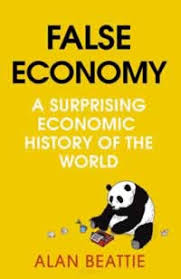|
| | |
| |
|
TALLRITE BLOG
Write to blog@tallrite.com
|
Drowning in Oily Mistakes
Technical and foolish mistakes found in the book
entitled
“Drowning
in Oil: BP & the Relentless Pursuit of Profit - A Review”
by Loren C Steffy, McGraw-Hill; 1 edition (November 5, 2010)
|
Page |
Avoidable Mistakes and
Technical Errors |
|
xv |
“Public
mistrust of oil companies in the America grew ...” The
definite article should not be there (especially not on the very
first page of text). |
|
2 |
BP’s 35,000 foot Tiber well in the Gulf of
Mexico was not “the deepest well in history” (p2). That
honour belongs to the USSR which over nineteen long years in the
1970s and 80s drilled the
Kola Superdeep Borehole to a vertical depth 40,230 feet in
Siberia. In Qatar in 2008, well BD-04A was drilled to an even
greater length, 40, 318 feet, but this included a 35,768 foot
horizontal section, so reached nothing like the massive depth of
Kola.
The Macondo field is not an ancient graveyard
of decomposed dinosaurs. Macondo’s oil and gas, like all
hydrocarbons, were formed from decomposed marine life (such as
phytoplankton, algae and bacteria) which died in largely the
Triassic, Jurassic and Cretaceous periods, 245-145 million years
ago, albeit when
dinosaurs roamed on land.
And no oilfield is “a massive
underground pool”; oil is found within in the tiny spaces of
porous rocks. |
|
3 |
Gas inflows do not “kick at the drill pipe”
– they push fluid in spurts (“kicks”) up the inside of the
drill pipe.
Ixtoc, a Mexican well in the Gulf which blew out in 1979 and
whose oil reached over 160 miles of Texas beaches did not “taint”
(or “sully” – p180) them ; it devastated them, and marine
life, though the environment eventually recovered. Mr Steffy seems
to be downplaying Ixtoc to make Macondo look worse. |
|
4 |
BP may have been “spending half-a-million
dollars a day for the Horizon”, but the total spread cost
(including services, boats, helicopters etc) would have been double
that. Therefore a delay of 1½ months would have amounted to a
budget overrun of some $45m, not $20m as stated. ($40m eventually
appears on p165). |
|
5 |
Drilling mud doesn’t “lubricate the well”
and does a lot more than “tamp down the pressure”. It
lubricates the drilling bit, removes cuttings, and plasters the wall
of the hole.
“Drilling too quickly” does not cause
mud loss. The only thing that does is when the mud pressure is
greater than the formation pressure, the plastering is unable to
contain the mud, and the formation cracks under the stress allowing
mud to flow into the openings and/or into the pores instead of
returning to surface.
The drilling crew did not pump mud “out of
the hole” and replace it with seawater. They did this to the
riser, the big pipe that connects the rig to the wellhead on the
seabed. The same mistake is made on p173 and 175.
This should not have been done until the well
was not only “capped” (as stated), but dead beneath the cap,
ie the mud in the hole was heavy enough to prevent inflow, augmented
by a cement plug as additional safety.
The main reason for displacing the riser (not
the hole) from mud to seawater is not to recover the mud but to
avoid polluting the sea with mud. |
|
6 |
Interesting that roustabout Stephen Stone
apparently finished his 12-hour shift and went straight to bed, not
even stopping for meal. |
|
7 |
The “huge machines … pump mud” not “from
the well” but into it. |
|
8 |
Drilling fluid would have been shooting not “from
the top of the derrick” but to it. |
|
10 |
“The nightmare well, with its mile-long
conduit into the belly of the earth” in fact measured
5023 feet (0.95 miles) to the seabed plus a further
13,337 feet (over 2½ miles) to the bottom of the well. |
|
12 |
Mike Williams, an injured survivor, found his “left
leg useless” but in the next paragraph “got to his feet”.
|
|
22 &
28 |
“London’s tony St. James Square” –
should that be “tiny”?
A curious “tony” reappears on p28. |
|
25 |
It isn’t only wells in 5,000 feet of water that
require remote operated submarines, as inferred. No diver can work
beyond a thousand feet, if that. From then on it’s got to be remote
operated vehicles (ROVs). |
|
36 |
Strange avoidance of the concise term “Hungarian
Jewess” in favour of “Hungarian of Jewish descent”, in
referring to Lord Browne’s mother. |
|
39 |
BP’s pioneering and speedy development in the
1970s of the North Sea’s first elephant, the five-platform
Forties field, was anything but the product of a “plodding,
risk-averse culture”. |
|
57 |
To say that Piper Alpha was destroyed by the
ignition of “gas from a ruptured line” is misleading. The
disaster was initiated by a leak of condensate which exploded,
causing an oil fire which in due course heated gas risers causing
them to fail and this in turn allowed the gas to ignite and
explode. |
|
58 |
Forties Alpha was an offshore production
platform not a “drilling rig”, though it contained one. |
|
159 |
“Water is lighter than oil”. Not it’s
not! This error makes a nonsense of the accompanying explanation of
fluids flowing in a reservoir. |
|
166 |
ALL wells, not just those which are “modern”
and “drilled far offshore”, are “far
more complex”
than “a shaft of metal piercing the ground”.
From p166, the author repeatedly uses “drill
string” when he should say “production string”. The
drill string is used solely for drilling. The production string is
the final, ie innermost, casing cemented in the hole.
Dick Cheney became a “lightning rod for
controversy” over Halliburton only after he left Halliburton to
become US VP and had divested himself of all stock and interests.
|
|
167 |
Where the liner is hung off inside the larger
casing, cement is not used to pack off or seal the two together.
The liner is cemented to the hole wall from the bottom up; the two
pipes are sealed to each other at the top of the liner by activating
seals made of rubber and lead.
The tie back is not an alternative to the
liner; it is an optional addition to the liner – it “ties back”
the liner to the wellhead to provide a continuous production string
from bottom to top. |
|
168 |
The centralizer controversy is curious:
centralizers are cheap to buy and quick to install. The shortage of
fittings was doubtless why the number was not increased – to
fetch
more would have led to a helicopter trip and several hours delay,
and much embarrassment. |
|
169 |
Surely BP had a shore-based engineer with
absolute authority to take such decisions (eg on centralizers)?
The “loss of circulation” was extremely
serious. It is almost inconceivable that cementation operations
would proceed without first rectifying this. |
|
171 |
This kind of higher level planning meeting
would never have been taking place in the “drillers shack”
but in the main accommodation/office module. |
|
172 |
“Cementing a well a mile below the surface
of the water is as much art as science”. No it’s not; it’s
nearly all science.
·
And this cementation took place 3½ miles below the
surface.
·
And it is not/cannot be “spread at particular
points”. It is all pumped out of the bottom of the liner or
casing and works its way up the outside.
·
And cement is not “poured” into the hole, it is
pumped. |
|
173 |
It is not “time-consuming” to evaluate
a cement bond log: you can visually interpret what it says at once.
Nor was the cement job “temporary”; it was permanent. |
|
174 |
The toolpusher does a lot more than “oversee
the materials and personnel”. He is the rig owner’s senior
representative, responsible both for the integrity of the rig and
for ensuring BP’s instructions are executed. |
|
175 |
An “hour-long discussion” on a rig
consuming $1m/day would cost BP $40,000, not as stated “a
half-million dollars”. |
|
178 |
The author needs to define what he means by “worst
spill ever in American waters”. The quantity of oil spilled may
have been more, but the environmental and wildlife damage it did was
certainly far less than done by the Exxon Valdez and arguably less
than Ixtoc’s. Macondo was less damaging because
·
the crude was more volatile than that carried by the
Valdez,
·
was far offshore allowing it to spread and biodegrade
more readily,
·
the weather conditions were warm which further
enhanced degradation,
·
dispersants were applied liberally both on the surface
and at depth, and
·
there was a massive effort to protect the seashore
through booms |
|
181 |
Oil prices – including futures – are driven
primarily by OPEC. The price of everything is driven by something.
Oil company collaboration does not reduce the
fierce competition in those areas where they do not collaborate.
“The three parties then hired a litany of
contractors”. No they didn’t. Only BP, as operator for the
three, did the hiring.
“A [major] rig operator may have
fewer than 20 customers worldwide”. This is wildly
underestimated. |
|
183,
184 & 185 |
Confusion over volumes and units as noted
above.
Regarding Macondo volumes, the author should
have noted that nothing was properly measured. Nearly every figure
bandied about, from 2,000 bbl/day to 80,000 or more, was based on
nothing other than humans eyeballing the flow as depicted by
underwater TV cameras and comparing this – by memory – with measured
flows they might once have seen on dry land. This involved no science
whatsoever. |
|
186 |
“While BP’s response to the Horizon disaster
may have been …”.
Should read “the Texas City refinery disaster”. |
|
191 &
227 |
Two very limited and poor descriptions of what
was a singularly brilliant project in the way the BP team brought
Macondo back under control. The author clearly hasn’t a clue about
this and didn’t bother to find out. |
|
200 |
“The Horizon’s [BOP stack] was on the
seafloor a mile below the surface and accessible only by remote
underwater submarines”. And, more significantly, by the control
systems. ROV inspections are rarely required. |
|
208 |
If the fishermen were so devastated by Macondo,
where was the TV footage showing dock after dock full of idle
fishing boats? (Answer: BP employed most of them for booming,
clean-up etc). |
|
209 |
There weren’t many tarballs, especially
compared with the Exxon Valdez crop. President Obama in a
famous
photo-op only seemed to find one of them. |
|
212 |
Oil does not “inundate” the land, not
unless all the pipelines rupture together. |
|
218 |
The Congressional Committee “would expect
contrition” but would not get it. But on the same page, BP’s
Tony Hayward is reported as saying “I’m deeply sorry”. |
|
219 |
The author seems surprised that Mr Haywood
would attempt to protect both BP and his job. |
|
228 |
The capping of Macondo by BP was not “a
small victory”. It was a massive, historic victory. |
|
230 &
235 |
“United Kingdom” always takes a definite
article. (Just as “the America” - on page xv -
does not!) |
|
241 |
“The basic design (of drilling wells) hadn’t
changed for 90 years”. That’s because the problem it solves
hasn’t. Similarly, the basic design of cars hasn’t changed for 90
years, for the same reason. |
|
244 |
As regards maintenance schedules for BOPs, the
first port of call should be Cameron the manufacturer |
|
247 |
The final killing of Macondo through relief
wells was not “symbolic”. It was actual, and by the way
another remarkable technical accomplishment. |
|
248 |
There was no “infamous Piper Alpha blowout”.
The platform was destroyed by a fire cause by escaped condensate
and, later, gas. The wells were shut off by their automatic
subsurface safety valves and played no part in the disaster.
“The drill bit is turned at an angle as it
nears the problem well”. In fact it is steered throughout its
course towards its target.
A description of how the relief wells were
actually drilled and steered would fascinate many readers. |
|
249 |
Some people’s livelihoods may have been “devastated”
but most were merely suspended. There is no evidence of long term
damage to fishing areas. |
|
251 |
That the Gulf’s richest but most difficult
fields should end up concentrated “in the hands of just a few
giant companies" is not unusual in costly high-tech businesses.
Just look at Boeing and Airbus. |
|
257 |
The author is incorrect to infer that there is
something intrinsically wrong with striving to get “more for less”.
In fact it is admirable, provided minimum standards are adequately
defined and met. |
Back
to the top |
Now, for a little [Light Relief]

“”
|
|
 |
|
Gift Idea
Cuddly Teddy Bears
looking for a home
Click for details
“” |
|


Neda Agha Soltan;
shot dead in Teheran
by Basij militia |

Good to report that as at
14th September 2009
he is at least
alive.
FREED AT LAST,
ON 18th OCTOBER 2011,
GAUNT BUT OTHERWISE REASONABLY HEALTHY |
|
 |
|
 |
|
BLOGROLL
Adam Smith
Alt
Tag
Andrew
Sullivan
Atlantic Blog (defunct)
Back Seat
Drivers
Belfast
Gonzo
Black Line
Blog-Irish (defunct)
Broom of Anger
Charles Krauthammer
Cox and Forkum
Defiant
Irishwoman
Disillusioned Lefty
Douglas Murray
Freedom
Institute
Gavin's Blog
Guido Fawkes
Instapundit
Internet Commentator
Irish
Blogs
Irish Eagle
Irish
Elk
Jawa
Report
Kevin
Myers
Mark
Humphrys
Mark Steyn
Melanie
Phillips
Not
a Fish
Parnell's
Ireland
Rolfe's
Random Review
Samizdata
Sarah
Carey / GUBU
Sicilian
Notes
Slugger O'Toole
Thinking Man's Guide
Turbulence
Ahead
Victor Davis Hanson
Watching Israel
Wulfbeorn, Watching

Jihad
Terrorism
Awareness Project
Religion
Iona Institute
Skeptical Bible
Skeptical Quran
Leisure
Razzamatazz
Blog
Sawyer
the Lawyer
Tales from Warri
Twenty
Major
Graham's Sporting Wk
Blog Directory
Eatonweb
Discover the
World
My Columns in the
|
|
What I've recently
been reading

“The Lemon Tree”, by Sandy
Tol (2006),
is a delightful novel-style history of modern Israel and Palestine told
through the eyes of a thoughtful protagonist from either side, with a
household lemon tree as their unifying theme.
But it's not
entirely honest in its subtle pro-Palestinian bias, and therefore needs
to be read in conjunction with an antidote, such as

See
detailed review
+++++

This examines events which led to BP's 2010 Macondo blowout in
the Gulf of Mexico.
BP's ambitious CEO John Browne expanded it through adventurous
acquisitions, aggressive offshore exploration, and relentless
cost-reduction that trumped everything else, even safety and long-term
technical sustainability.
Thus mistakes accumulated, leading to terrifying and deadly accidents in
refineries, pipelines and offshore operations, and business disaster in
Russia.
The Macondo blowout was but an inevitable outcome of a BP culture that
had become poisonous and incompetent.
However the book is gravely compromised by a
litany of over 40 technical and stupid
errors that display the author's ignorance and
carelessness.
It would be better
to wait for the second (properly edited) edition before buying.
As for BP, only a
wholesale rebuilding of a new, professional, ethical culture will
prevent further such tragedies and the eventual destruction of a once
mighty corporation with a long and generally honourable history.
Note: I wrote
my own reports on Macondo
in
May,
June, and
July 2010
+++++

A horrific account
of:
 |
how the death
penalty is administered and, er, executed in Singapore,
|
 |
the corruption of
Singapore's legal system, and |
 |
Singapore's
enthusiastic embrace of Burma's drug-fuelled military dictatorship |
More details on my
blog
here.
+++++

This is
nonagenarian Alistair Urquhart’s
incredible story of survival in the Far
East during World War II.
After recounting a
childhood of convention and simple pleasures in working-class Aberdeen,
Mr Urquhart is conscripted within days of Chamberlain declaring war on
Germany in 1939.
From then until the
Japanese are deservedly nuked into surrendering six years later, Mr
Urquhart’s tale is one of first discomfort but then following the fall
of Singapore of ever-increasing, unmitigated horror.
After a wretched
journey Eastward, he finds himself part of Singapore’s big but useless
garrison.
Taken prisoner when Singapore falls in
1941, he is, successively,
 |
part of a death march to Thailand,
|
 |
a slave labourer on the Siam/Burma
railway (one man died for every sleeper laid), |
 |
regularly beaten and tortured,
|
 |
racked by starvation, gaping ulcers
and disease including cholera, |
 |
a slave labourer stevedoring at
Singapore’s docks, |
 |
shipped to Japan in a stinking,
closed, airless hold with 900 other sick and dying men,
|
 |
torpedoed by the Americans and left
drifting alone for five days before being picked up, |
 |
a slave-labourer in Nagasaki until
blessed liberation thanks to the Americans’ “Fat Boy” atomic
bomb. |
Chronically ill,
distraught and traumatised on return to Aberdeen yet disdained by the
British Army, he slowly reconstructs a life. Only in his late 80s
is he able finally to recount his dreadful experiences in this
unputdownable book.
There are very few
first-person eye-witness accounts of the the horrors of Japanese
brutality during WW2. As such this book is an invaluable historical
document.
+++++

“Culture of Corruption:
Obama and His Team of Tax Cheats, Crooks, and Cronies”
This is a rattling good tale of the web
of corruption within which the American president and his cronies
operate. It's written by blogger Michele Malkin who, because she's both
a woman and half-Asian, is curiously immune to the charges of racism and
sexism this book would provoke if written by a typical Republican WASP.
With 75 page of notes to back up - in
best blogger tradition - every shocking and in most cases money-grubbing
allegation, she excoriates one Obama crony after another, starting with
the incumbent himself and his equally tricky wife.
Joe Biden, Rahm Emmanuel, Valerie Jarett,
Tim Geithner, Lawrence Summers, Steven Rattner, both Clintons, Chris
Dodd: they all star as crooks in this venomous but credible book.
ACORN, Mr Obama's favourite community
organising outfit, is also exposed for the crooked vote-rigging machine
it is.
+++++

This much trumpeted sequel to
Freakonomics is a bit of disappointment.
It is really just
a collation of amusing
little tales about surprising human (and occasionally animal) behaviour
and situations. For example:
 |
Drunk walking kills more people per
kilometer than drunk driving. |
 |
People aren't really altruistic -
they always expect a return of some sort for good deeds. |
 |
Child seats are a waste of money as
they are no safer for children than adult seatbelts. |
 |
Though doctors have known for
centuries they must wash their hands to avoid spreading infection,
they still often fail to do so. |
 |
Monkeys can be taught to use washers
as cash to buy tit-bits - and even sex. |
The book has no real
message other than don't be surprised how humans sometimes behave and
try to look for simple rather than complex solutions.
And with a final
anecdote (monkeys, cash and sex), the book suddenly just stops dead in
its tracks. Weird.
++++++

A remarkable, coherent attempt by Financial Times economist Alan Beattie
to understand and explain world history through the prism of economics.
It's chapters are
organised around provocative questions such as
 |
Why does asparagus come from Peru? |
 |
Why are pandas so useless? |
 |
Why are oil and diamonds more trouble
than they are worth? |
 |
Why doesn't Africa grow cocaine? |
It's central thesis
is that economic development continues to be impeded in different
countries for different historical reasons, even when the original
rationale for those impediments no longer obtains. For instance:
 |
Argentina protects its now largely
foreign landowners (eg George Soros) |
 |
Russia its military-owned
businesses, such as counterfeit DVDs |
 |
The US its cotton industry
comprising only 1% of GDP and 2% of its workforce |
The author writes
in a very chatty, light-hearted matter which makes the book easy to
digest.
However it would
benefit from a few charts to illustrate some of the many quantitative
points put forward, as well as sub-chaptering every few pages to provide
natural break-points for the reader.
+++++

This is a thrilling book of derring-do behind enemy lines in the jungles
of north-east Burma in 1942-44 during the Japanese occupation.
The author was
a member of Britain's V Force, a forerunner of the SAS. Its remit was to
harass Japanese lines of
command, patrol their occupied territory, carryout sabotage and provide
intelligence, with the overall objective of keeping the enemy out of
India.
Irwin
is admirably yet brutally frank, in his
descriptions of deathly battles with the Japs, his execution of a
prisoner, dodging falling bags of rice dropped by the RAF, or collapsing
in floods of tears through accumulated stress, fear and loneliness.
He also provides some fascinating insights into the mentality of
Japanese soldiery and why it failed against the flexibility and devolved
authority of the British.
The book amounts to
a very human and exhilarating tale.
Oh, and Irwin
describes the death in 1943 of his colleague my uncle, Major PF
Brennan.
+++++
Other books
here |
|

Click for an account of this momentous,
high-speed event
of March 2009 |
|

Click on the logo
to get a table with
the Rugby World Cup
scores, points and rankings.
After
48
crackling, compelling, captivating games, the new World Champions are,
deservedly,
SOUTH AFRICA
England get the Silver,
Argentina the Bronze. Fourth is host nation France.
No-one can argue with
the justice of the outcomes
Over the competition,
the average
points per game = 52,
tries per game = 6.2,
minutes per try =
13 |
|

Click on the logo
to get a table with
the final World Cup
scores, points, rankings and goal-statistics |
|
 |
| |














